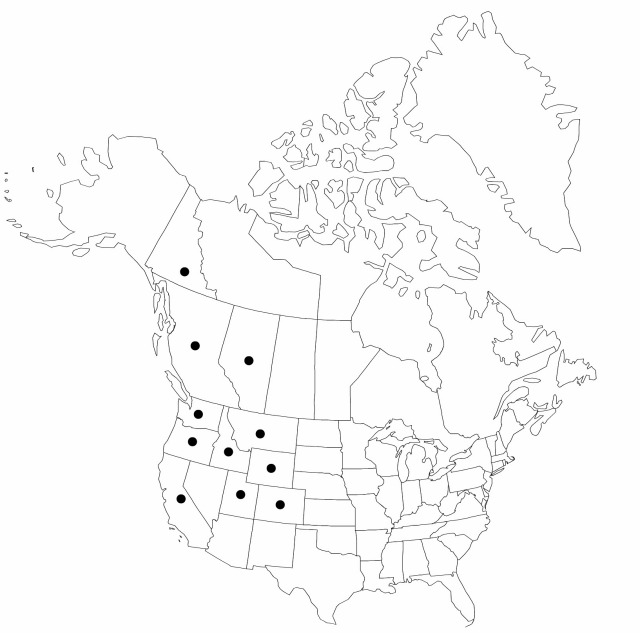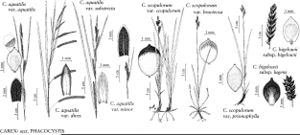Carex scopulorum var. bracteosa
Leafl. W. Bot. 9: 16. 1959.
Basionym: Carex vulgaris var. bracteosa L. H. Bailey
Synonyms: Carex brachypoda T. HolmCarex campylocarpa T. HolmCarex campylocarpa subsp. affinis Maguire & A. H. HolmgrenCarex gymnoclada unknown
Revision as of 02:53, 27 July 2019 by FNA>Volume Importer
Culms 11–65 cm, scabrous on angles. Leaves: proximal sheaths red-brown, fronts with pale brown spots, veinless, with blades, glabrous, backs scabrous; blades 3–6 mm wide. Perigynia ellipsoid to obovoid, apex obtuse or rounded. 2n = 72–80.
Phenology: Fruiting Aug–Sep.
Habitat: Wet subalpine and alpine meadows
Elevation: 1200–3000 m
Distribution

Alta., B.C., Yukon, Calif., Colo., Idaho, Mont., Oreg., Utah, Wash., Wyo.
Discussion
A common sedge of the central Rocky Mountains, Carex scopulorum var. bracteosa is distinguished from var. scopulorum by the scabrous stems and sheaths and by the narrower, more ellipsoid perigynia. It is usually distinguishable from var. prionophylla by the absence of bladeless, ladder-fibrillose sheaths; the two taxa may be difficult to identify in areas where both occur.
Selected References
None.
Lower Taxa
None.
